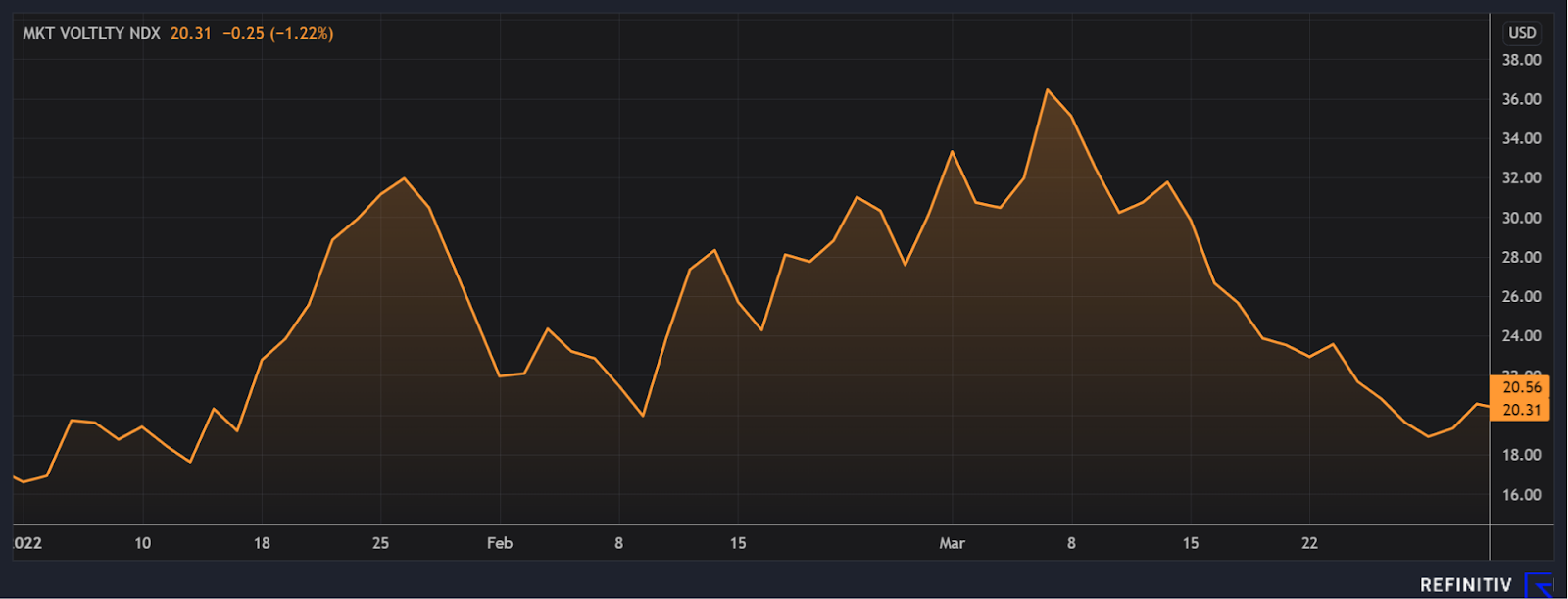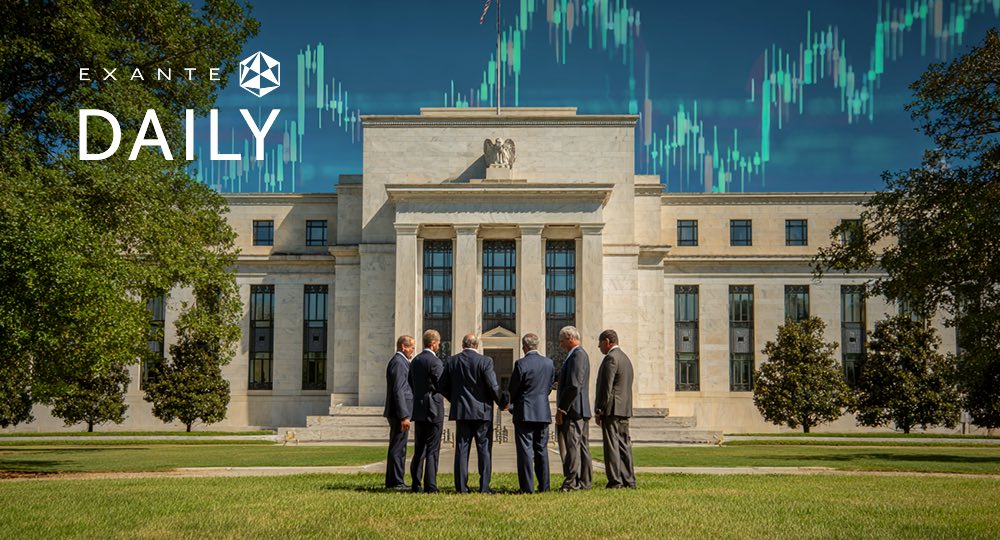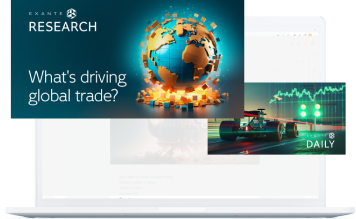By Renée Friedman, PhD
The month in summary
Welcome to Macro Monthly Insights for March 2022. Investors have spent the month trying to get their respective heads around the Russian-Ukrainian crisis and the wider impact it is having on geopolitical relationships and trade, surging commodity prices, and the response of different central banks to inflationary pressures. It is very clear that the longer term consequences of the crisis on global trade including commodities such as wheat, soybean oil, and metals like copper, cobalt, and lithium and as well as on energy markets will likely be transformative for a number of sectors and countries. The OECD estimated that the crisis will take more than 1% off global growth this year and drive up inflation by a further 2.5% from already-high levels.
In the US quarter-end portfolio rebalancing increased the demand for bonds and held down yields, but overall, during the month, yields, especially at the short end, rose to multi year highs. In the US we saw the emergence of an inverted yield curve in which short-term Treasuries yield more than longer-term debt. This is often seen as a precursor to a recession.
Meanwhile stock markets seemed to have risen above concerns about a growth slowdown as global central banks moved to tackle inflation by raising rates and/or slowly withdrawing stimulus. The S&P 500 was up 3.2% in March, the Nasdaq was up 4.3%, and the Dow Jones industrial Index was up 2.3%. In Europe the STOXX 600 was up 0.61%, the DAX was down 0.32% in March, the CAC40 was up 0.02%, the IBEX35 was down 0.40%, the FTSE MIB was down 1.55% and the FTSE 100 was up 1.55% in March. The MSCI World Equity index was also up, gaining 1.94% in March.

Market volatility index Q3. Source: Refinitiv
We saw the three major central banks take varying degrees of action against inflation in March. The US Federal Reserve, in a 9-1 vote, did as the market expected in March by raising the benchmark rate by 25 basis points to 0.50%. It projected its policy rate would hit a range between 1.75% and 2% by year's end which would imply a 25 basis point rise for at least 6 meetings. However, over the course of the month, as energy prices surged across the US, the Fed took on an even more hawkish tone with Fed Chairman Jerome Powell saying that the Fed would move "expeditiously" to raise rates and that nothing would prevent the Fed raising rates by half a percentage point at the 3-4 May policy meeting. This tone was supported during the course of the month by various Fed policy makers: New York Federal Reserve President John Williams andSt. Louis Fed President James Bullard said the Fed may need to raise interest rates more aggressively to tackle high inflation, something, Cleveland Fed President Loretta Mester said she thought “it is better to front-load some of the needed increases earlier rather than later,” and San Francisco Fed President Mary Daly said "I have everything on the table right now. If we need to do 50 (basis points), 50 is what we'll do.” Even some less hawkish members are open to increasing the speed of the rate changes with Chicago Fed President Charles Evans stating that while he's “comfortable” with raising rates in quarter-point increments, he is “open” to a 50 basis-point move if needed. Only the more dovish Minneapolis Fed President Neel Kashkari has warned against going too far.
And despite concerns that the US is headed towards a stagflationary situation as it will prove quite difficult to raise rates without it increasing the unemployment rate, the data has been supportive of the economy’s ability to withstand an aggressive rate hike trajectory: ADP National Employment Report showed private payrolls rose by 455,000 jobs last month after advancing 486,000 in February.
Although ECB President Christine LaGarde said that it [the ECB] will be in no hurry to raise interest rates and any move will be gradual and come only “some time” after its bond buying programme ends following the March meeting, the ECB has sent out a series of mixed messages since. ECB policy maker Francois Villeroy de Galhaus said that the ECB needed to normalise monetary policy to keep people's inflation expectations anchored. However, ECB Vice President Luis de Guindos said that inflation expectations were not becoming de-anchored. Estonian central bank governor Madis Mueller, a member of the ECB’s Governing council, said the ECB would only extend the (asset purchase programme (APP) if there was "a dramatic shift" in the inflation outlook, while ECB board member Isabel Schnabel said that the ECB would consider extending the APP beyond this summer if the euro zone economy fell into a "deep recession" because of the Ukrainian crisis. The threat of recession looms large as sanctions on Russia have pushed energy prices to record highs across the continent, hitting consumer and business confidence. President Lagarde warned on 30 March that, "the longer the war lasts, the higher the economic costs will be and the greater the likelihood we end up in more adverse scenarios." With Europe still in recovery mode as Coronavirus spikes yet again across the continent and inflation hits the highest levels in decades, coming in at 7.5% on average across the Eurozone in March, and specifically 7.1% in Germany, 5.1% in France, 7% in Italy and 9.8 % in Spain, the ECB is in danger of losing its credibility as it becomes ever harder to believe that inflation rates will be back to the ECB's target level of 2% from next year. Although energy was the chief cause of the inflation spike there has also been significant food price inflation, services and durable goods, providing further proof that price growth is not only due to rising gas and oil. Germany, the bloc's largest economy and probably most reliant on Russian energy, is among the hardest hit and the government's council of economic advisers on 30 March cut their growth forecast for this year to 1.8% from the 4.6% and forecast inflation at 6.1% this year, more than 3 times the ECB target rate, before falling to 3.4% in 2023.
However, the labour market remains strong in the Eurozone and wage price inflation is not yet evident. Eurozone unemployment fell to a record low in February as unemployment in the 19 countries sharing the euro fell to 6.8% from a revised 6.9% in January.The 6.8% rate is the lowest since records began in 1998. Nevertheless, as the ECB tries to fulfil its mandate of price stability, it will be left dependent on the impact of any cut in Russian energy supplies to Europe as this would spark an even more significant price shock and risk stalling eurozone economic growth.
In the UK the Bank of England (BoE) did, at its 16 March meeting, in an 8-1 vote, raise the key benchmark rate by 25 basis points, to 0.75%. Further rate rises are expected as inflation continues to soar; it rose by 6.2% in the 12 months to February 2022, up from 5.5% to January. The labour market remains tight with the number of job vacancies in December 2021 to February 2022 rising to a new record of 1,318,000 and the unemployment rate falling to 3.9%. However, there are continued falls in labour force participation overall. There remain nearly 600 thousand fewer people in work, and 400 thousand more people out of work and not looking, than before the pandemic began. And inflation will be hit again by the price rise in energy prices that come into effect on 1 April.
Over the past 3 months, the euro has fallen about 2.1% against the USD, the GBP has fallen about 3% and the Japanese Yen has strengthened about 5.4 % against the USD, and the CHF is also up almost 0.6%.
Oil markets have been shaky in March in reaction to the ongoing crisis. The demands by Russian President Vladimir Putin that foreign buyers pay for Russian gas in rubles from 1 April or else have their supplies cut, caused some panic as Europe simply cannot replace this supply quickly. President Putin is trying to force EU governments to breach their own rules by having to interact with the Russian banking system. In short, this demand is an attempt to prop up the ruble with an inflow of euros into the central bank. This would reduce the drop in the value of the ruble and greatly ease the ability to import certain goods thereby lowering, at least slightly, the risk of civil disobedience and protests. The threat of lack of global supply and further rising energy prices led US President Joe Biden to announce that starting in May, the United States will release 1 million barrels per day (bpd) of crude oil for six months from the Strategic Petroleum Reserve (SPR). This followed the previous release of supplies by the US and other IEA members of an additional 60,000 barrels per day. OPEC+ has remained resistant to pressure to pump more, only agreeing to continue with the additional Thursday OPEC+, 432,000 barrel-a-day supply increase scheduled for May at an online meeting on 31 March.

Brent Crude futures March 2022. Source: Refinitiv
Things to look out for this coming month
Beyond the Ukrainian-Russian crisis which continue to take the majority of the world’s attention, there are other considerations that may affect global geopolitics and economics including:
3 April 2022 Hungarian National Elections. The latest polls for Hungary’s general elections indicate that it will be a very tight race between Prime Minister Viktor Orbán’s Fidesz party and the coalition of six opposition parties headed by Conservative independent, Péter Márki-Zay. The election is for 199 MPs to the National Assembly for four-year terms; of these 106 single-mandate constituencies are decided by first-past-the-post voting and the remaining MPs will be elected from a single nationwide constituency, mostly by proportional representation. There are serious concerns being raised about the fairness of the vote with the Organisation for Security and Cooperation in Europe (OSCE) citing the country’s history of electoral irregularities since 2014. If the results do not reflect the actual voting, if the result is too close to call or either candidate refuses to accept the outcome of the vote, the aftermath of the elections could further destabilise Eastern Europe and put the already stressed EU into a position of having to take action against a member state. The EU has already had significant disagreements with Hungary over media freedoms, rule of law and minority rights.
10-24 April 2022 French Presidential Election. French President Emmanuel Macron is seeking re-election, and a mandate to advance his ambitious EU agenda. If no candidate wins a majority in the first round, held on 10 April, a run-off will be held between the top two candidates on 24 April. Macron's lead has dwindled over the past few weeks, as opponents from both the far-Right and far-Left have seen a rise in support. Marine Le Pen, the leader of the hard-Right National Rally, is currently holding second place in polls, suggesting a rematch of 2017's second round could take place.
14 April ECB meeting and monetary policy decision. The ECB decision will depend on how persistent voting members feel inflation will continue to be and if inflation expectations remain anchored. The Eurozone is still feeling the effects of the Russian-Ukrainian crisis. There are growing concerns that supply chains, which have still not fully recovered from disruptions that emerged during the Covid pandemic, will be further stressed as air routes are shut and shipping routes are changed following actions by AP Moeller-Maersk and other global shipping companies that are halting container movement to and from Russia. This, along with recent Coronavirus spikes and increasing energy prices will continue to feed into higher production and food costs as well as hit consumer demand.
18th Apr - Sun 24th IMF and World Bank Spring meetings. The Annual Meetings in Washington, DC will include the meeting of the G7 bring together financial, political and private representatives to discuss the global economic outlook, global financial stability, the global effect on energy and food prices of the Russian-Ukrainian crisis, and climate change among other issues. The growing risk of stagflation as the COVID-19 pandemic and subsequent inflation uptick will likely be a key focus.
Has Europe backed itself into a corner?
The scarcity of rare earth metals, who controls them, the pursuit of netzero and undenabile effects of climate change will affect global stability. However, it is in Europe, with its mandated path towards Net Zero and with the least easy access to them, that is increasingly of concern in the markets. Should traders be worried?
The answer is yes and no. The International Energy Agency (IEA) predicts that wind and solar could account for 70% of power generation by 2050, up from 9% in 2020, if the world embarks on a course to become carbon-neutral by 2050. That translates into huge demand for the metals, such as cobalt, copper and nickel, along with the 17 rare earth metals that are vital for the renewable technologies as they are used as catalysts and magnets in traditional and low-carbon technologies or in the production of special metal alloys, glass, and high-performance electronics. The IEA says to hit net-zero globally by 2050, would require six times more mineral inputs in 2040 and would increase by almost seven fold by 2030. And the location of these metals with many being located in politically unstable countries such as the Democratic Republic of Congo or in countries with whom EU relations have become more strained such as China and Russia. The Economist predicts that many of what it calls “green commodity superpowers” will have windfalls of more than $1.2 trillion in annual revenue from energy-related metals by 2040.
The Russian-Ukrainian crisis has highlighted the shifting influence of countries. The current issues with Europe’s dependency on oil and gas show the importance of diversification of value chains across all strategic industries for the production of green energy and other green technologies.
So what does this mean for investors, particularly those in Europe, when they think about the extended impact this may have on their portfolio holdings, particularly automobile and manufacturing stocks? It means that in addition to considering their country allocation risk levels, they must also consider the ability of companies to adapt and to innovate. They need to look at who is innovating in securing supply, particularly through clearer ESG friendly methods such as developing computer modelling techniques to locate the best grade of these metals and methods for their extraction, who is also innovating to be less dependent on these metals as a percentage of the input into the final end product, and who is learning to recycle the existing metals best and developing a more strategic circular economy approach. This is one of the reasons that the European Raw Materials Alliance (ERMA) was created in September 2020 and why the EU agreed, in November 2021, to accept a EU strategy that is expected to boost strategic autonomy and resilience in the supply of Critical Raw Materials (CRMs). According to the ERMA, the European Commission was urged to ensure that CRM policies are part of national resilience and recovery plans under NextGenerationEU, that investments in recycling capacities are being made, and that new finance instruments with regard to risk sharing are promoted. However, despite the promises last year, events have moved faster than most predicted. This means that investors need to look more deeply into not just what the companies in their portfolios produce, but where they get their inputs from, if they are to truly be both sustainable and profitable over the medium to long term.
DISCLAIMER: While every effort has been made to verify the accuracy of this information, EXT Ltd. (hereafter known as “EXANTE”) cannot accept any responsibility or liability for reliance by any person on this publication or any of the information, opinions, or conclusions contained in this publication. The findings and views expressed in this publication do not necessarily reflect the views of EXANTE. Any action taken upon the information contained in this publication is strictly at your own risk. EXANTE will not be liable for any loss or damage in connection with this publication.
Este artigo é-lhe fornecido apenas para fins informativos e não deve ser considerado como uma oferta ou solicitação de uma proposta para compra ou venda de quaisquer investimentos ou serviços relacionados que possam ser aqui referenciados. A negociação de instrumentos financeiros envolve um risco significativo de perda e pode não ser adequada para todos os investidores. O desempenho passado não é um indicador fiável do desempenho futuro.






